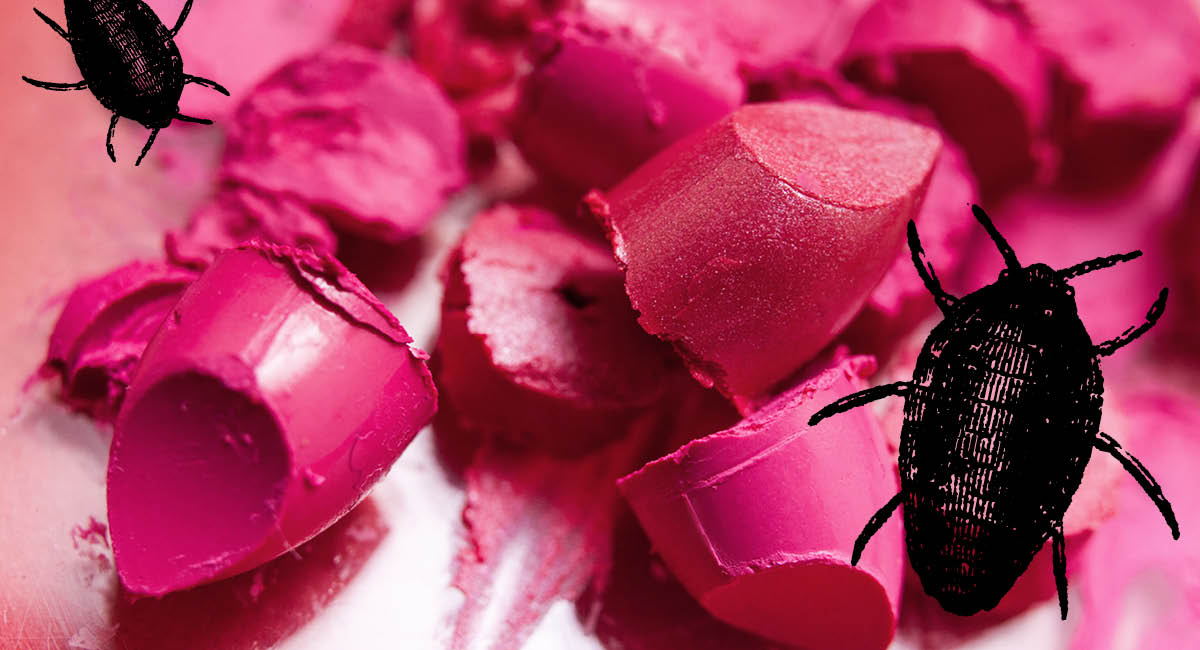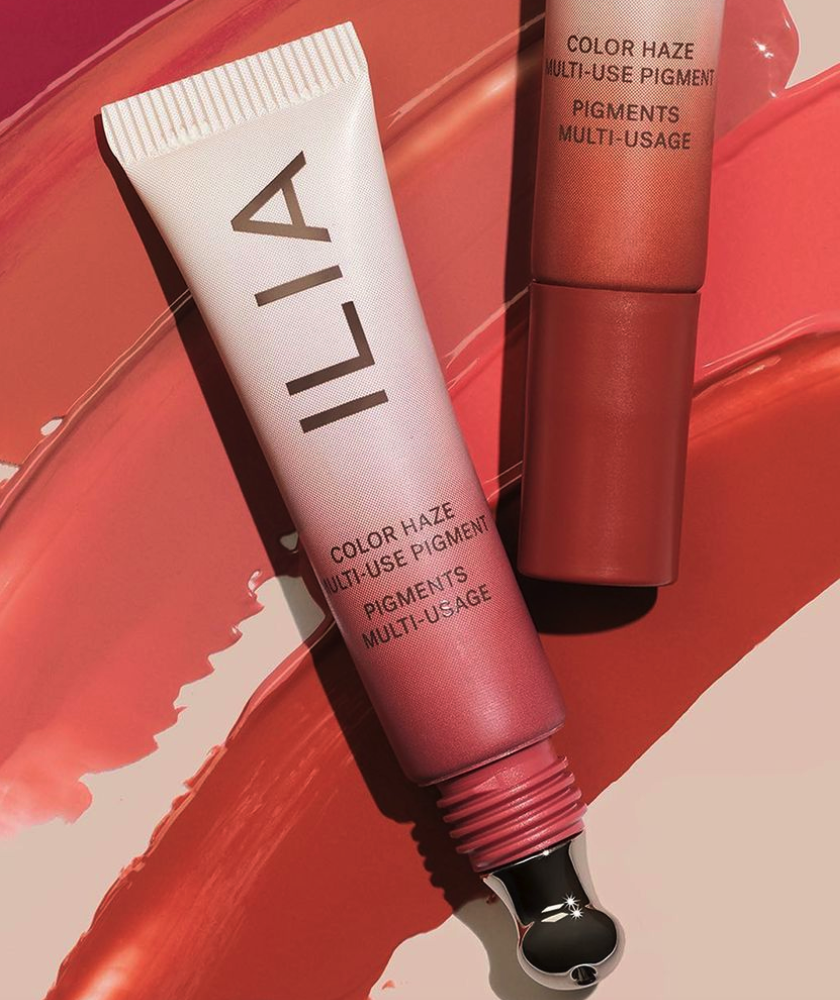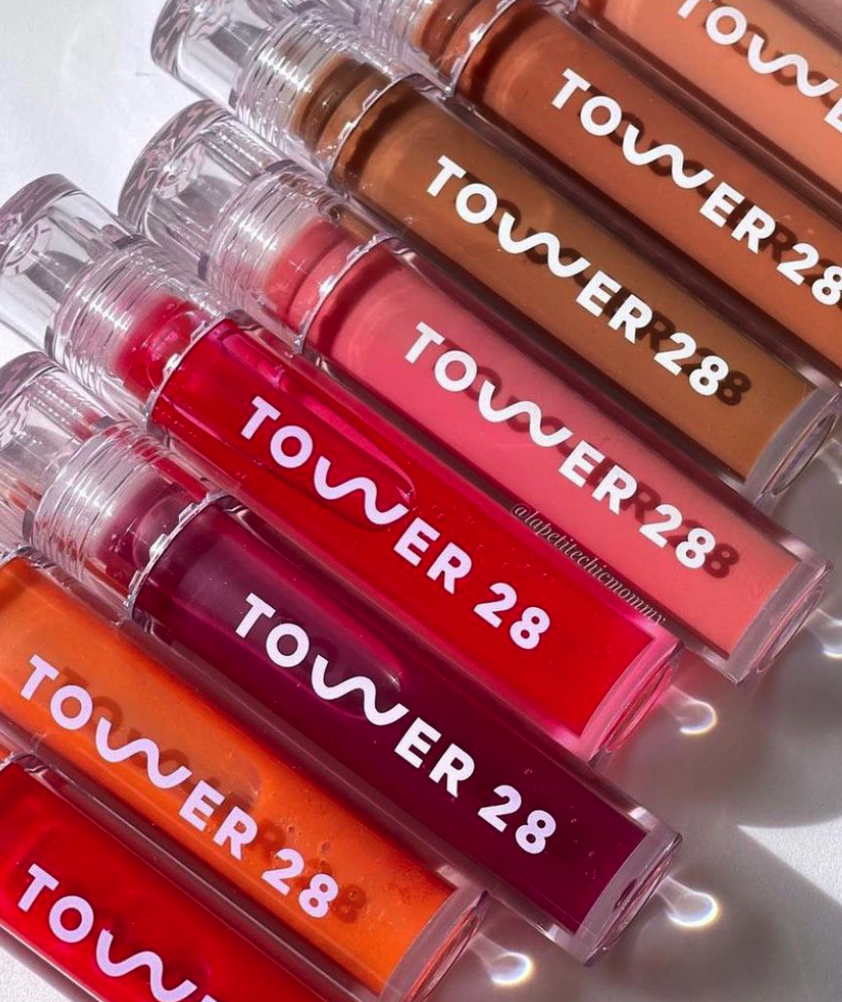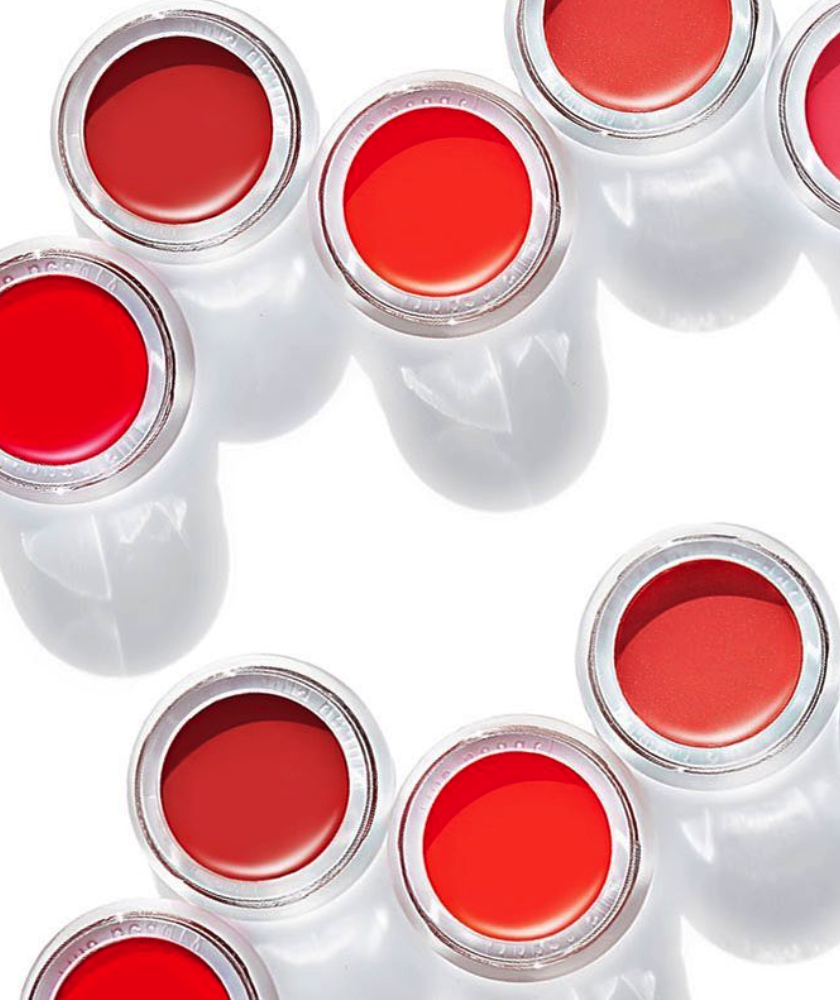It’s highly likely that some of your cosmetics have bugs in them, intentionally. I’m talking specifically about the extract from one little critter called a Cochineal beetle. This beetle extract is used in both traditional (petroleum-based) and natural makeup for the brilliant, cool-toned pinks and reds it imparts. This buggy dye is generally referred to as “CARMINE” in cosmetics, makeup, and food.
The Cochineal beetle (Dactylopius confuses), native to Mexico and Central America, spends her happy life feasting on various cacti. Yes, you guessed it, only the female beetle is used for the dye.
She is harvested and her exoskeleton is crushed to create a brilliant crimson red dye extract commonly called Carmine. The Aztecs were the first to use Carmine as a red dye. Carmine is now not only found in cosmetics but in many other consumables from your strawberry yogurt and colored drinks to perfume and vitamins.
Why is carmine used in cosmetics?
Carmine is very frequently used to add color vibrancy, long-wear, and shade intensity to makeup. It is also the ‘go-to’ natural dye when cosmetic chemists want to achieve specific cooler ranges of pinks, purples, and reds while avoiding the use of synthetic red, purple, and pink FD&C and Lake dyes.
AD Some of the links below are affiliate links which means this blog receives a small commission if you click through and make a purchase. Your purchase through the link is greatly appreciated and supports the continued upkeep of this blog at no additional cost to you.
Jump to my list recommended Carmine-Free Makeup Brands.
Why would any brand use Carmine in their makeup?
Makeup brands use this ingredient because they feel it’s the best natural ingredient to achieve the brilliant cool pinks and reds their customers demand while staying cleanly within the brand’s natural makeup claims.
That’s why you see ultra-natural makeup brands like Burt’s Bees using Carmine to achieve cool baby pinks and bright magenta. They know that the ingredient can be problematic to some, and also know it’s the only option for creating those colors without relying on synthetic FD&C and Lake dyes that are antithetical to their natural beauty brand philosophy.
Is Carmine vegan? No, Carmine is not vegan because the ingredient comes from a beetle. The vegan lifestyle does not permit the use or consumption of beetles and other living creatures (or bi-product of that creature) for any reason.
As with Beeswax (the bi-product of an insect’s hard work), the inclusion of Carmine in a cosmetic would invalidate any vegan claims.
Aren’t there other natural pigments and colors that can be used instead of Carmine? No, there are no existing natural colors or pigments in nature that achieve the cool, blue undertoned color range that Carmine provides to pink and red cosmetic products. All-natural pigments and colors from derived from natural sources like Iron oxides have warm, rusty, or orange undertones. Other natural ingredients claimed to be “fruit pigments” do not naturally remain vibrant and brilliant pink or red. Natural has its way with them and all-natural fruit pigments turn brown as they oxidize in a formula. Carmine is the only consistent natural (albeit from a beetle) that offers this gorgeous range of pinks and reds that consumers demand in their natural beauty products.
There are four ways to color makeup and cosmetics. Adding an additional color to skincare isn’t necessary, but the color of the product is quite literally the point and function of a makeup product.
Artificial FD&C and Lake Dyes: The most popular pigment ingredient used in makeup by both traditional cosmetic brands and brands claiming to be natural is artificial FD&C and Lake Dyes. Lakes are made from FD&C dyes. These dyes are brilliant but in no way natural. These synthetic dyes are considered “clean” by the “clean beauty” movement (and the clean beauty clan actually considers them preferable to the natural options) but make no mistake, they are in no way natural.
Iron oxides: The second type of pigment is called Iron oxides. They are natural in origin but as the name suggests, are derived from the oxidation process of iron. You may know the substance commonly as rust. You may also recall that rust as a color always has a very warm, orangy tone. The cosmetic ingredient is a more refined version of what. you know as rust and comes in a variety of powder reds, yellows, oranges, browns, and black shades.
Many traditional and natural beauty brands rely heavily on Iron oxides to provide the color to their products. Like all ingredients, there are inherent issues with using it. Iron oxide reds and yellows are always orangy and warm in undertones which don’t make for a great cool-toned color palette. That means you will never achieve a gorgeous bright magenta or beautifully cool baby pink exclusively with Iron oxides. What’s more, as the product ages, the Iron oxides will do what they do best… continue to oxidize. This means that as the color ages in your product it will get distorted and increasingly orangy/warm.
Carmine: Carmine is the third common colorant that is used in both natural and traditional (petro-chemical/synthetic based) makeup lines. As you may have already observed, traditional makeup brands simply use the ingredient that is most effective regardless of its origin or its ethical issues. Natural brands have a number of other considerations but, when faced with the challenge of delivering the colors their customers demand, they will default to using Carmine in certain natural lipstick, natural lip gloss, and natural blushes.
Fruit Pigments and Vegetable Dyes: Have you ever left a piece of fruit out? You know what happens, it always turns brown. This shade change is known as oxidation and it happens 100% of the time when any fruit or vegetable is exposed to air. The warmer the climate, the more accelerated the oxidation process. While there are a number of natural beauty brands claiming to derive their brilliant makeup shades from “fruit pigments’, we are very, very skeptical.
Most of the more intensely colored fruits and vegetables such as beets and purple potatoes do yield deep red and purple pigments that can be used in cosmetics but (and this is a big one) the pigment only works in water-based formulas. Why is that an important fact? Most makeup, especially lip and cheek makeup is oil-based. That means only dyes and pigments that work with oil-based formulas will be compatible… eliminating “100% pure fruit pigments” as an option.
While that particular fruit may be in the beauty brand’s formula and on their ingredient list, we don’t believe for a moment that it’s what is responsible for that brilliant magenta pink… and you shouldn’t either. Our BS radar goes off big time when we see some of the colors “natural” brands are claiming come from “100% pure fruit pigments”.
There is no 3rd party validation or verification of what ingredients are or aren’t in any beauty brand sold in the US. Furthermore, there is no science or granted patents to validate the possibility that fruit pigments can stay stable (on their own without the support of a synthetic dye). I will only believe 100% pure “fruit pigment” claims as true when I see a third-party lab test to prove the brand is not also using dyes that they aren’t listing on the ingredient list.
What does a Carmine allergy look like? While quite rare, Carmine can trigger a serious allergy in people. The allergy can present as a topical reaction that may look as mild as slight itching and watering eyes or can be as severe as swollen shut eyelids, a progression to anaphylaxis, or a complete swelling of the throat requiring a trip to the ER.
As an additive, Carmine was approved by the US FDA for use in cosmetics in 1977. However, the FDA updated its ruling to include new labeling requirements, “in response, to reports of severe allergic reactions including anaphylaxis, to cochineal extract-containing food and carmine-containing food and cosmetics”. The FDA’s updated carmine labeling guidelines for cosmetics “will allow consumers who are allergic to these color additives to identify and thus avoid products where they’re contained.” This is why the US FDA requires that products that contain Carmine must declare “Contains carmine as a color additive.” conspicuously on their label.
What do natural beauty brands use instead of Carmine? There is no great natural and vegan replacement for Carmine. Most vegan beauty brands who are also dogmatically natural in their ingredient selections and opt-out of using synthetic FD&C and Lake dyes choose to use natural Iron oxide pigments and micas specifically treated with Iron oxide and heat to achieve red, pink, and purple hues. It’s not perfect but right now it’s the best the industry has and it’s an ongoing challenge for natural beauty brands to develop certain shades without this buggy ingredient.
Which cosmetic brands contain Carmine? Carmine is such a common ingredient in both traditional and natural makeup that the list is too long to mention. You’ll find Carmine in brands that range from drugstore beauty brands like L’Oreal and Maybelline to the most expensive high fashion beauty lines like Chanel and YSL. The most well-known natural cosmetic brand that uses Carmine is Burt’s Bees in their gorgeous moisturizing tinted lip oil and other makeup products. Any individual makeup product may contain Carmine as a color additive. If a cosmetic product claims to be vegan and contains Carmine it’s mislabeled and the beauty brand clearly doesn’t understand the definition of vegan. Carmine is never vegan.
How do I avoid Carmine? The most straightforward way to avoid Carmine is to purchase products from companies that specifically and publicly state that they disclose 100% of the ingredients on the label and clearly know what they are talking about if they claim their cosmetics are vegan. If a product is vegan it should be 100% Carmine-free. Ideally, the beauty brand would also have a public statement that the product is Carmine-free.
That may seem harsh, but here’s why I only trust full disclosure companies:
Cosmetic companies that do not explicitly state that they disclose 100% of their ingredients on the label may include Carmine in their cosmetic formula and simply not include it in the ingredient list if it appears in concentrations of less than 1% of the entire formula.
There are various loopholes in cosmetic labeling that may allow a cosmetic company to include Carmine in their formulas but hide the ingredient from the label and the consumer. If the cosmetics you are using use the phrases “natural dyes”, “natural pigments” or “fragrance”, there is a possibility that the cosmetic could contain Carmine.
These ‘catch-all’ ingredient listings allow the company to change or add ingredients at any time without updating the consumer or their customer service representatives. In general, a cosmetic company’s customer service representatives are not informed of the hidden changes in formulas.
While this is contrary to the US FDA labeling requirements, there is no premarket approval or 3rd party lab test validation to force compliance in the US.
Sometimes Carmine can sneak into a formula without the beauty brand owner knowing… especially if they don’t know what they are doing or what questions and documentation to ask for from their contract manufacturer or ingredient supplier. What appears to the brand owner as a gorgeous magenta-colored “mica” they include in their lipstick formula may actually be mica mixed with Carmine.
How else does Carmine appear on ingredient labels? You may find Carmine listed as any of the following:
- Carmine
- Carmine (Coccus Cactil)
- Carmine 5297
- Carmine Ultra-Fine
- Carminic Acid
- Carminic Acid Lake
- Cochineal
- Cochineal Extract
- Natural Red 4
- B Rose Liquid
- Natural Dyes
- Natural Pigments
- Crimson Lake
- Natural Red 4
- C.I. 75470
- E120
I still want those crazy intense, super long-lasting cool reds and pinks! Should I just go with synthetic dyes in my cosmetics? Our philosophy is that if you can find something that is just as good, natural, and in line with your ethics, use it first. Awareness is key. Once you have awareness you have a choice. If you know what you are using you can make more informed decisions and bend your rules every once in a while consciously, with the awareness of all that decision implies.
Are synthetic dyes a good alternative to using Carmine dye? The clean beauty clan would say that synthetic FD&C and Lake dyes are actually the least harmful choice for non-toxic cosmetics when choosing between synthetic and natural colorants because they are created in a lab and therefore don’t have any of the contaminants associated with natural pigments that are mined from the earth and contain trace amounts (parts per million or billion) of heavy metals like lead.
Opponents would disagree saying that all synthetic dyes are unnatural to the body and natural pigments that are highly refined to remove heavy metal contaminants are still the “least worst option” currently available. For many who have no issues or allergies to Carmine and no lifestyle conflicts when eating bugs (like shrimp and lobster…our buggy friends of the sea), Carmine could be the best choice to keep your makeup as natural as possible.






Hi I am allergic to red dyes. Are your products safe for me?
Loni, we don’t sell products at the moment… but our blog site will continue to offer expert suggestions for the best dye-free, natural cosmetics. Are you allergic to FD&C and Lake Dyes only or also natural red dyes like Carmine? Please subscribe to our newsletter and follow us on Facebook and Instagram so you can be updated as we write new blogs about dye-free cosmetics!
So just to be clear – you never use carmine in any of your products – even if the product is not totally vegan?
Hi Helen, that is correct. The only animal bi-product that we use is beeswax. We also list 100% of our ingredients on each individual product page.
As someone who has taken many trips to the ER from Carmine, thank you!
Wow!, I did not know about the Carmine. I am not vegetarian, yet I still don’t want this in my makeup. I have super sensitive skin, and am celiac. As such I like to know what things are made from. My daughter also has very sensitive skin, so I will be sharing. Thank you.